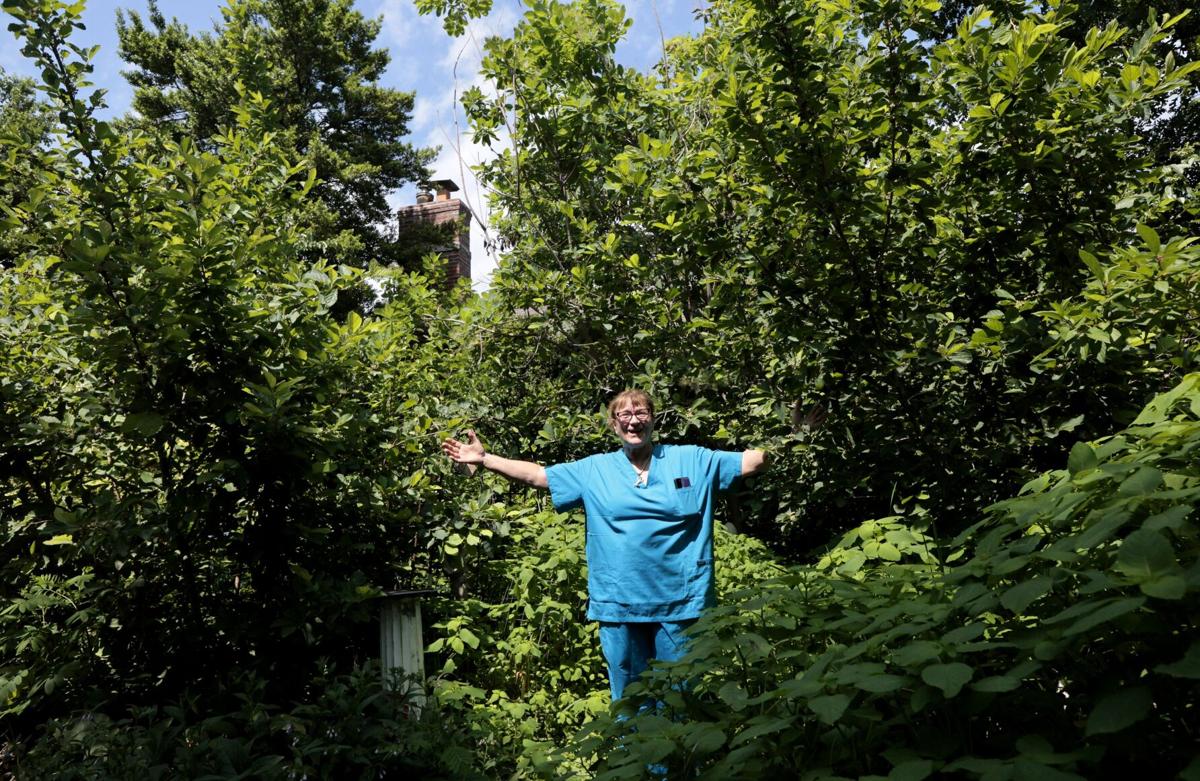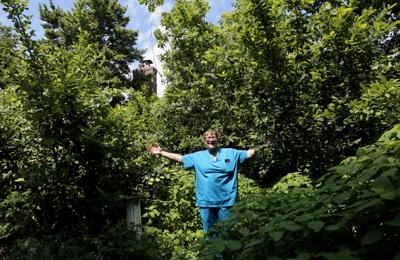ST. LOUIS COUNTY — In Renee Johnson’s front yard, spindly jewelweed thrives under the shade of Missouri buckeye and persimmon trees, attracting pollinators to her home off Reavis Barracks Road in South County.
The new rule clarifies that managed areas such as native meadows, rain gardens and gardens with ornamental or native plants are exempt from the county's weed-control ordinance.
The yard is technically illegal. Take the soft, orange-flowering , for instance. It can grow up to 5 feet tall ‚Äî much higher than the 8 inches allowed in a front yard by ◊Ó–¬–”∞…‘≠¥¥ County‚Äôs weed control ordinance.
‚Äú◊Ó–¬–”∞…‘≠¥¥ County talks about global warming, water conservation, all these things,‚Äù said Johnson, a retired nurse, over the din of cicadas last week. ‚ÄúBut there‚Äôs nothing to protect us even if we‚Äôre doing the right thing.‚Äù
But such rules have been slowly changing, here and across the country, over the last several years. And now the ◊Ó–¬–”∞…‘≠¥¥ County Council, too, is eyeing its ordinance. As soon as Tuesday, the council could consider a change to , such as Johnson‚Äôs, that benefit people, plants, insects and animals.
People are also reading…
The current rule mainly targets overgrown lawns where a property owner has let weeds go wild, not native gardens. And the county hasn’t always enforced the laws aggressively. Johnson has been cited multiple times in the past, such as for a traffic line-of-sight issue that forced her to cut some back from the road. But she hadn't been cited in the past three months, according to county records.
Another South County resident with a native garden, Ann Mertens, said the county once told her she needed to cut down her plants — but backed off once she explained they were part of a native garden.
The revised ordinance would clarify that native, environmentally beneficial gardens are protected under county law, said Councilwoman Kelli Dunaway, a Democrat from Chesterfield, who introduced the bill. Johnson’s stout witch hazel, bushy milkweed and slender, drooping sweetspire would specifically be protected.
Dunaway, herself, recently planted a patch of native prairie in her backyard. “It’s a minor tweak that will have a positive impact,” she said of the bill. “It’s really just updating (the ordinance) to give people a little more flexibility but also balance that with aesthetics and community standards and expectations.”
The proposed changes, if approved, would only apply in unincorporated county territory, not in municipalities. Some communities here, like Creve Coeur and Kirkwood, already have similar ordinances, as do cities nationwide, such as Minneapolis and Green Bay, Wisconsin.
The rules would still prohibit “grass, turf-grass, hay, weeds, brush or other vegetation” higher than 8 inches, but exempt managed areas such as native meadows, rain gardens and gardens with ornamental or native plants.
The bill also attempts to discourage invasive species. It would as defined by the Missouri Department of Conservation, such as bush honeysuckle, Johnsongrass and the mimosa tree, also known as a silk tree, among other plants.
≤—æ±≤ı≤ı¥«≥Ð∞˘æ±‚Äôs , as defined by the United States Department of Agriculture, would also be outlawed. Those weeds are considered very difficult to eradicate and are a threat to the state‚Äôs agriculture, and the list includes kudzu vine and some types of thistle.
Jean Ponzi, green resources manager for the Missouri Botanical Garden, praised Dunaway’s bill.
“The proposed changes and additions look like they’re thorough and sensible, and still reserve the right to enact restrictions on people who are not maintaining their property,” Ponzi said.
serve a purpose, unlike traditionally manicured lawns, Ponzi said. They:
- Boost biodiversity, and provide a habitat and food chain for animals and insects, including native moths, butterflies, hummingbirds and bats.
- Clean and manage water, reducing flooding.
- Sequester carbon in their root systems.
- Reduce the need for lawn maintenance and the fuel, water and chemicals necessary to maintaining turf.
- Help cool neighborhoods.
“Turf does none of that. Absolutely zip,” Ponzi said.
The bill keeps an existing enforcement mechanism mostly the same.
If a property is in violation, the county may send a notice to the owner and order them to destroy the plants within a week. The owner may request a “conference” with the county within three days of receiving a notice.
If the owner doesn’t comply, the county would have the right to enter the property and destroy the plants, then make the owner pay for it. The owner could face up to a $350 fine, 30 days in county jail, or both.
Editor's note: This story was updated on June 4 to clarify ◊Ó–¬–”∞…‘≠¥¥ County had cited Renee Johnson multiple times.
View life in ◊Ó–¬–”∞…‘≠¥¥ through the Post-Dispatch photographers' lenses. Edited by Jenna Jones.










